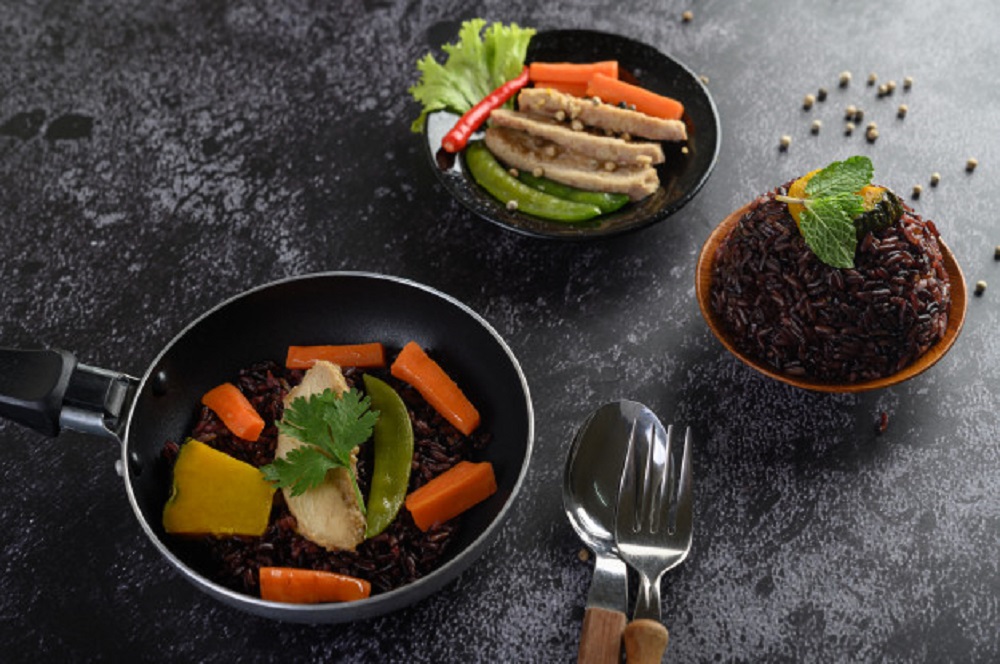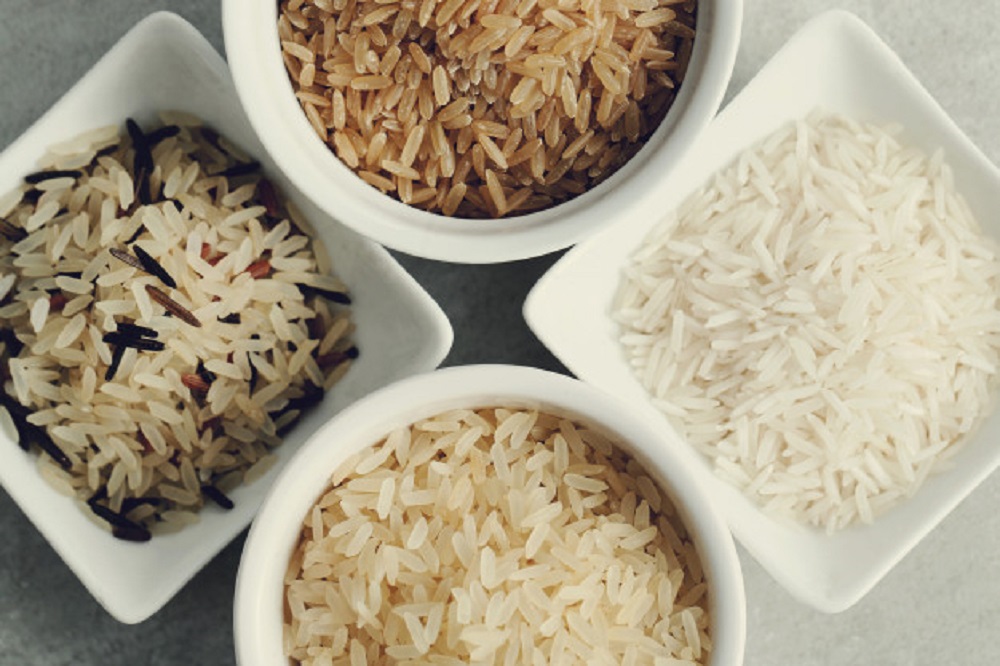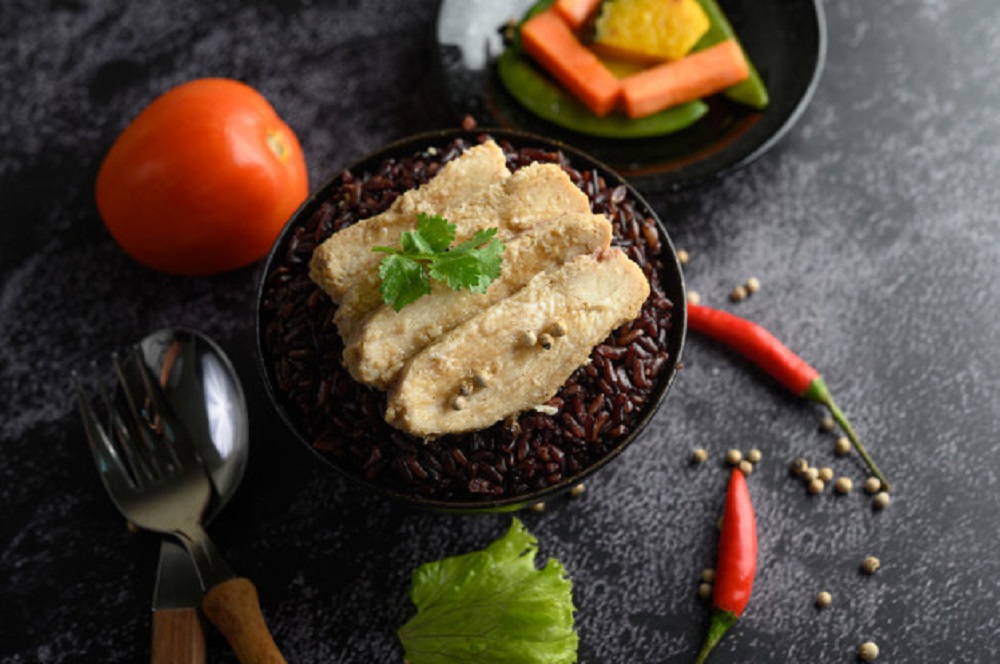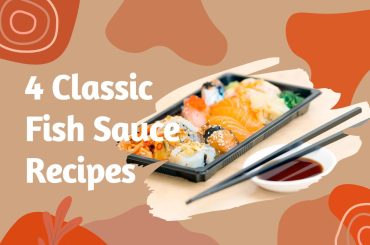Ever wanted to feast like an emperor? Try purple rice. Legend has it that it was so rare that only the ancient Chinese emperors would get to have it on their menu. But these days, this colorful rice is as easy to get your hands on as it is good for you.
In this article, we’ll cover what this rice is, its nutrition, health benefits, and even some fun recipes.
What is purple rice?

You wouldn’t think this rice should be called “purple” when you buy it! Before cooking, it’s actually a deep inky-black color. Unsurprisingly, this is why this grain also goes by “black rice”.
This nutrition-dense grain comes from Japan. It’s said to be difficult to grow (which was why only the rich could afford it). Because of its long history, it goes by many names, including forbidden rice, emperor’s rice, and black rice.
Getting technical for a moment, there a few varieties of rice that are purple in the species Oryza sativa. There are two kinds: long-grained, and sticky. Both are gluten-free (1).
What does this colorful grain taste like? The same as brown rice. Which is to say, mild and slightly nutty. And just like brown rice, our iridescent purple grain has excellent amounts of fiber and other nutrients (2).
What sets this kind of rice apart from its none colorful cousins is its astronomical levels of anthocyanin. This pigment, present in the bran hull of the grain (the outermost layer) is an antioxidant. Purple rice has one of the highest concentrations of anthocyanins in food (3).
No wonder emperors were clamoring to get some of this goodness on their plates.
Nutrition and calories
Long story short, this violet grain is good for you. It has a wholesome nutrition profile, has many health benefits, and is delicious to boot.
Nutrition varies by brand, but here’s what this grain is made up of (4):
- Serving: 100g
- Energy: 354 kcal
- Protein: 8.33g
- Total lipid fat: 1.04g
- Carbohydrate, by difference: 77.08g
- Fiber, total dietary: 2.1g
- Sodium: 10 mg
Like all rice, this kind is also a bit heavy-handed with carbs. But it’s the other nutrients present that make it a food worth adding to your diet.
Now, let’s talk about some of its health benefits.
Health benefits
Purple rice is a versatile grain, both on your plate and in your body. Helping with diabetes, digestion, eye, and heart health, this vibrant grain is a jack-of-all-trades.
Here’s are some health benefits you can get by adding it to your diet.
Well-rounded nutrition profile
As you can see from the previous section, add this grain to your diet and you’ll have a lot of your nutrition bases covered. If you’re having trouble sticking to a balanced diet, “forbidden rice” might hold some healthy secrets.
A “balanced diet” is one which gives your body all the nutrients it needs to work correctly. Remember the Food Pyramid? It made waves in the health community in the 90sthat and claimed to provide you with a balanced diet. Sadly, it’s considered somewhat outdated now (5).
The USDA now recommends the following for a balanced diet (6):
- Fresh fruit
- Fresh vegetables
- Whole grains
- Legumes
- Nuts
- Lean proteins
(The exact amount you should eat depends on your body and activity levels.)
Every element of that balanced diet should support each other and provide good nutrition. Our titular rice does just that. Because it has carbs, protein, even fat, it goes a long way in giving you a balanced diet.
Boosts digestive health

Any grain with the outer layer intact is called whole grain. In other words, the outer layer of the grain, or the bran hull, hasn’t been removed. And the presence of the hull makes purple rice high in fiber.
Fiber, also called roughage, is the material in plant foods that your digestive system can’t completely break down. Although it might seem bad .at you can’t digest fiber, the opposite is true.
Having lots of fiber in your diet is essential for your digestive health. You’ll have a lower risk of constipation and fecal incontinence (7, 8). High levels of fiber in your diet may even reduce hemorrhoids.
In short, “fiber is the fuel that keeps your colon going,” says experts (9).
But too much of a good thing is still bad. The same applies to fiber. Exceeding your recommended daily amount may lead to bloating, gas, and (ironically) constipation.
Good for your heart

The vibrant purple hue of the grain comes from a pigment called anthocyanin. Blueberries, eggplants, and many other red, blue and purple fruits get their distinguishing color from this pigment.
But what’s important is that anthocyanin is a powerful antioxidant (10).
Antioxidants are compounds that protect the cells in your body. One of the many harmful things that can happen to your cells is oxidation. This is a chemical process that produces free radicals and chain reactions that may damage the cells in your body.
Back to anthocyanin. The purple pigment has been suggested to reduce the risk of coronary heart disease cardiovascular-related death by up to 9% and 8% respectively (11). So in addition to purple rice, it’s better to add many more anthocyanin supplements to your diet for a healthy heart.
There is a range of other benefits as well, such as improved cholesterol levels, triglyceride levels, and blood pressure. All of these again contribute to heart health.
Improves eye health

This pigmented grain also contains two substances known as lutein and zeaxanthin (12). Both are present in high amounts.
The two potent antioxidants are found in many vegetables, and also in your eyes. Your eye lens, retina, and macula have particularly high concentrations. This is why doctors believe lutein and zeaxanthin play a major role in keeping your eyes healthy (13).
The way the two works is that they both protect your eyes from harmful high-energy light. For example, ultraviolet light has been associated with cataract formation and retinal degeneration (14). And that’s just one kind of high-energy light that’s bad for your eyes.
Another combined benefit of lutein and zeaxanthin is that they may stave off age-related eye diseases. Studies show that eating a diet rich in these two nutrients may make you half as likely to get cataracts. It may also slow down macular degeneration (15, 16).
However, remember that these studies combine lutein and zeaxanthin with other nutrients. Vitamins C and E are two examples. Eating food with a good blend of all these nutrients is likely what’s better for your eyes.
Helps fight diabetes
We’ve talked about anthocyanin a lot in this article. And we’ll talk a lot more—this astonishing antioxidant even helps with diabetes!
Anthocyanin is a flavonoid. These are a diverse group of plant chemicals (a.k.a. phytonutrients) that you can find in just about every fruit and vegetable. Flavonoids and their chemical cousins are known as carotenoids are what makes the world’s fruits and veggies so colorful.
Dietary anthocyanins can affect insulin resistance in your body and provide you with health benefits for diabetic conditions. There are multiple functions of these pigments that are connecting with the inhibition of carbohydrate digestion in the digestive tract, improving insulin secretion for enhancing sensitivity and protection of pancreatic cells.
The great thing about flavonoids is that they influence blood sugar levels, improve insulin sensitivity, and reduce sugar digestion in the small intestine. All these lead to lower blood sugar levels (17).
Controls cholesterol

Some animal studies have shown that a purple rice diet reduces the levels of bad cholesterol. Not just that, it increases the levels of good cholesterol as well (18).
Here’s what that means. Cholesterol is a waxy substance that builds up in your arteries. Contrary to popular belief, it’s not entirely bad for you. Only a certain type is (19). So-called “bad cholesterol” is scientifically known as low-density lipoprotein cholesterol and contributes to blocked arteries. “Good cholesterol” (known as high-density lipoprotein cholesterol) on the other hand, pick up deposited cholesterol and carries it to your liver.
Diet isn’t even the major factor for the cholesterol in your body. Only 25% comes from the food you eat. The other 75% is produced in your liver. But that doesn’t mean that the quarter dependent on your diet isn’t important. So it’s crucial that you maintain healthy levels of good cholesterol in your body by eating colorful fruits and veggies.
Purple rice Vs other varieties of rice

There more than 40,000 known varieties of rice in the world. Let’s look at how this particular variety stacks up against its competition.
First, let’s talk calories. Purple rice is generally high in energy, with a 1/3 cup containing about 200 calories. To put that into perspective, a similar portion of brown rice will only contain about 80 calories. If you’re one to count calories, this high number might require you to cook and serve yourself smaller portions.
Next, the nutrition. The “purple” part of this rice comes from the still-present outer layer. And like brown rice, the presence of the bran hull makes the purple varieties whole grains. White rice, which has the bran and germ removed, is less nutritious since most of the fiber and nutrients are in the outer layer. So from a nutritional standpoint, pigmented rice is preferable to white rice.
All kinds of rice are packed full of carbs. But if your tummy’s still craving some grainy goodness, you can go for higher fiber varieties of rice. The high amount of fiber impacts the absorption of carbohydrates into the body. A diabetic person eating a high-fiber grain is less likely to have a blood sugar spike than one eating white rice. This is because of the slowed rate of absorption.
But what really sets purple rice at the head of the pack are its anthocyanin levels. Neither brown rice nor white have it. That’s not to say these other kinds aren’t healthy—brown rice still has a respectable amount of antioxidants. But they don’t come close to what’s in our special black-purple rice.
How to prepare purple rice
So far, we’ve uncovered the forbidden knowledge of forbidden rice. But what’s the point in knowing all about a type of food if you don’t get to eat it?
Let’s now look at how to prepare the perfect serving.
It’s important to remember that all varieties of rice might contain arsenic. Unless you buy pre-washed rice, wash yours three to four times in cool water. Even if you buy pre-washed rice, it’s best to give it a rinse. You don’t have to keep washing until the water’s clear.
One cup of rice needs 2 1/2 cups of water. You can also boil it in a variety of liquids to get a different taste. Try chicken stock, vegetable broth, or coconut water if you’re feeling adventurous.
About 20 minutes on the heat and five minutes off it should do the trick. Remember to stir often while the heat is on and wait till the water is absorbed when the heat is off.
This cooking time and amount of water leave the rice a little crunchy. This is normal. But if you like yours softer, just add another quarter cup of water and cook for 10 more minutes.
Still not convinced about the wonders of purple rice? Here’s the clincher. You can substitute purple rice in any recipe calling for any variety of rice!
With that in mind, here are some fun ideas to get you cooking.
5 delicious purple rice recipe ideas
Need a few ideas to get started? Here are 5 recipes from around the web that should impress your dinner guests:
- Soy ginger shrimp with forbidden rice
- Japgokbap (Korean multigrain rice dish)
- Black purple fried rice
- Laotian coconut sticky rice dessert
- Purple sticky rice with coconut milk
Final thoughts
Purple rice used to be served to emperors. No surprise, since it packs a nutritional heft fit for a king!
The versatile (and yummy) grain should cover a surprising number of health bases. Your heart, eyes, liver, and more will thank you for switching to this purple grain.
It’s not just healthy, though. It’s delicious. Why not try it in your next meal? Let us know how it goes in the comments down below!





